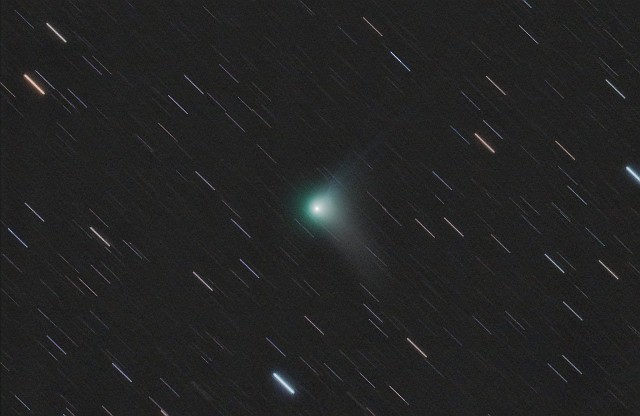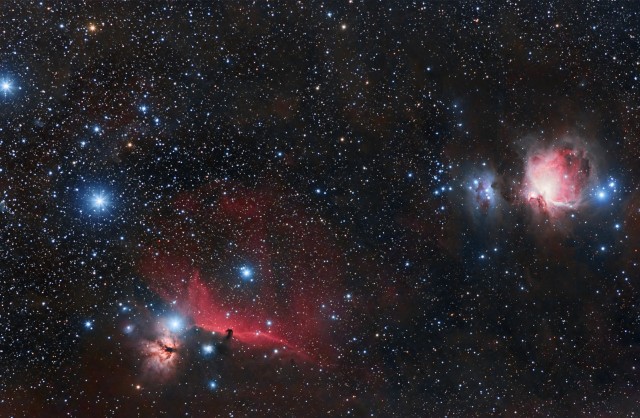
An image of Comet Garrad generated from 40×180 sec @ ISO 1600 sub-exposures. These were taken with a TV-85 at F/5.6 and a Canon T3 DSLR camera.

I took this with my Televue TV-85 refractor and combined 2 nights worth of data. The exposures ran like this: 46×180″ ISO1600, 11×900″ ISO400 and 57×360″ ISO800. Gamma Cassiopeia is the really bright star in the center and overwhelms the sensor, so I had to suppress it quite a bit in processing.

This is a composite image of the Belt of Orion area combining images shot with a Canon 200 mm F/2.8 lens at F/3.5 and at F/2.8, plus the Orion Nebula area and Horsehead area each imaged separately with a TV-85. RegiStar was used to align the separate images and PSCS2 was used to stack and blend the images together and crop them to form the final version seen here.